Giro d'Italia Women 2024
By Mikkel-T ([email protected])
Posted on Jul 3, 2024
Contents
Intro
Most people know this race as the Giro Donne, and until last year it was also called that. This year, RCS has taken over the organization of the race and it is now called Giro d'Italia Women. The race is starting soon and we wanted to make a small preview of all the stages, looking at the different types of stages together with their importance for the different classifications.
This year, the riders of the Giro d'Italia Women will cover a distance of 872.4 kilometers in their pursuit of the Maglia Rosa, they will do so over 8 stages and with a total vertical gain of 12340 meters. The race starts with a 15 km ITT and unlike the race last year, we are treated with real mountain top finishes this year with fx. Blockhaus on stage 7.
The jerseys
With the takeover of RCS, many of the jerseys from the old Giro Donne stays the same, but there are some slight changes and a classification less.
- For the general classification, the riders will be battling for the mythical Maglia Rosa, a timeless symbol that is known worldwide (and looks extremely good).
- The sprinters will fight for the Maglia Rossa, a red jersey that can be obtained by getting points in the intermediate sprints and on the line.
- In the intermediate sprints, the first 8 riders will get respectively 12, 8, 6, 5, 4, 3, 2 and 1 points
- For stages 2, 3, 4 and 5 the first 15 riders will get respectively 50, 35, 25, 18, 14, 12, 10, 8, 7, 6, 5, 4, 3, 2 and 1 points
- For stages 6, 7 and 8, the first 10 riders will get respectively 15, 12, 9, 7, 6, 5, 4, 3, 2 and 1 points
- The pure climbers will try to see if they can take the Maglia Azzurra, obtained by getting points on the QOM's along the route.
- Cat 4: 3, 2, 1
- Cat 3: 7, 4, 2, 1
- Cat 2: 15, 7, 4, 2, 1
- Cat 1: 20, 12, 7, 4, 2, 1
- Cima Alfonsina Strada (Blockhaus): 30, 24, 18, 14, 10, 6, 4, 2, 1
- For the young riders, the battle will be about the Maglia Bianca, which works like the Maglia Rosa but is only given to riders born in 2002 and after.
The stages
Stage 1
The first stage of the Giro d'Italia Women is a 15.7 km time trial. From the start, the route is very simple and only has a few turns before going out to the checkpoint which is also a u-turn. Then the route goes back the same way and up a small climb (5 km 5%) The hardest technical part of this TT will be the downhill part of this climb with some hairpins and cobbles.
The first Maglia Rosa will probably go to a TT specialist, but this stage will also be important for the GC and getting the first info about the shape of the favourites.
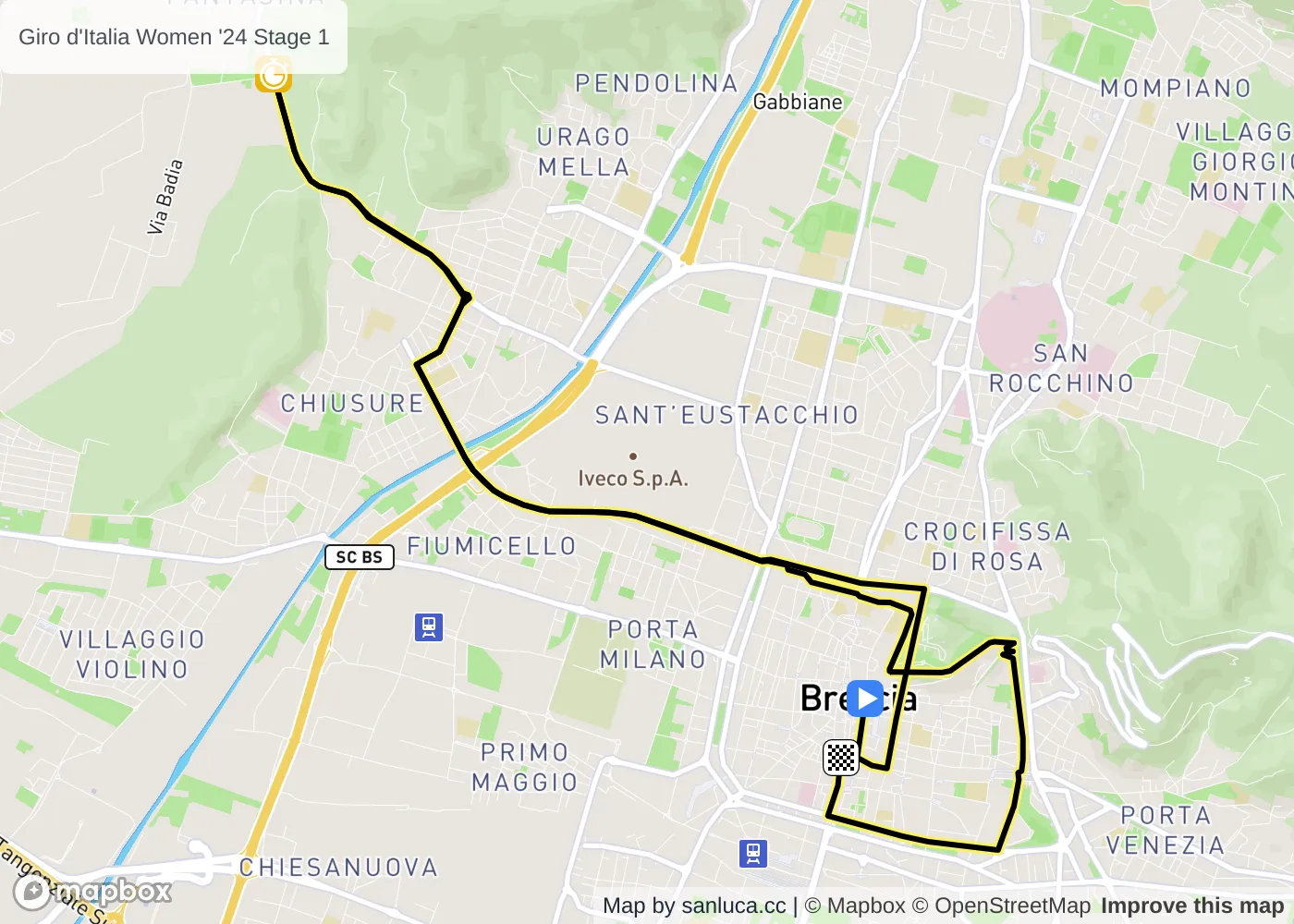
Stage 2
Stage 2 will be a 109.3 km long stage starting out flat and ending on a circuit around the finish town. On the circuit there will be a cat. 4 climb which will decide the first wearer of the Maglia Azzurra, but in the end there will be a sprint. A factor that can also have a say is the weather with the current forecasts promising at least a bit of rain on the circuit.
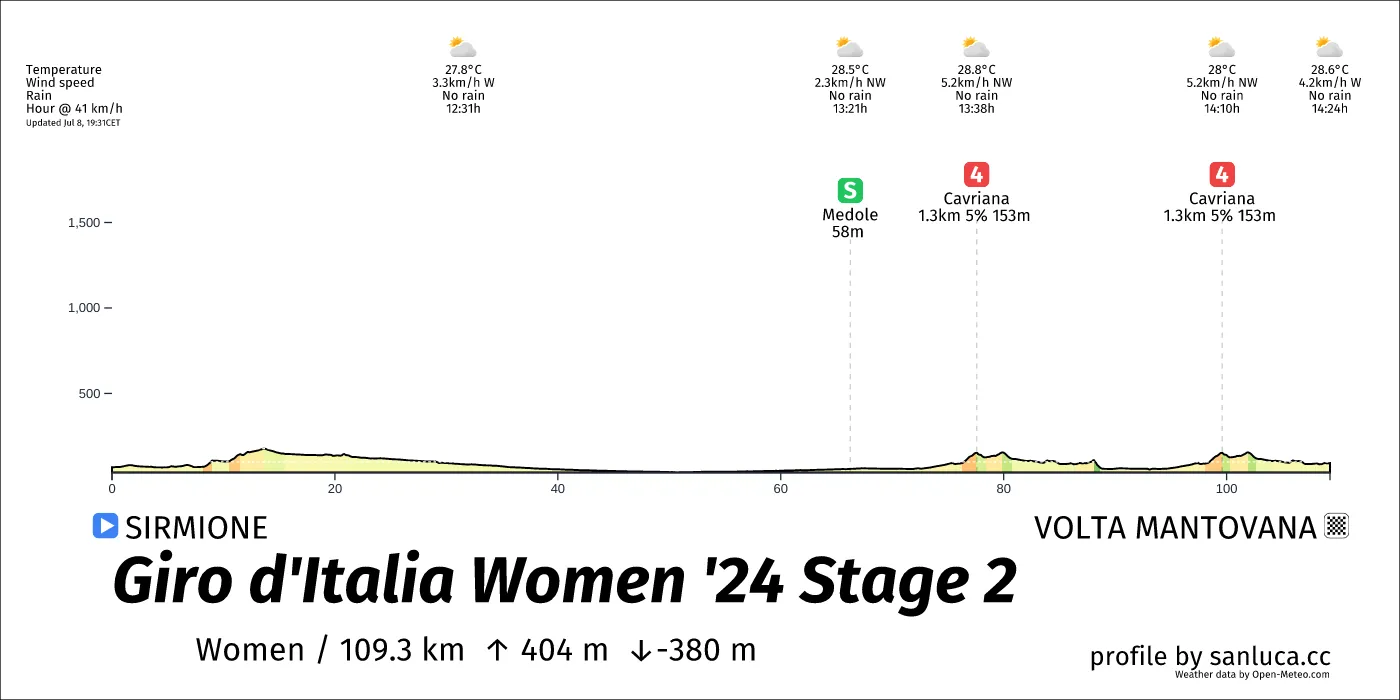
For the sprint itself, there will be some roundabouts in the last 3 kilometers and a sharp turn at the flamme rouge, the last turn will be at 500 meters to go after which there will be a straight line to the finish.
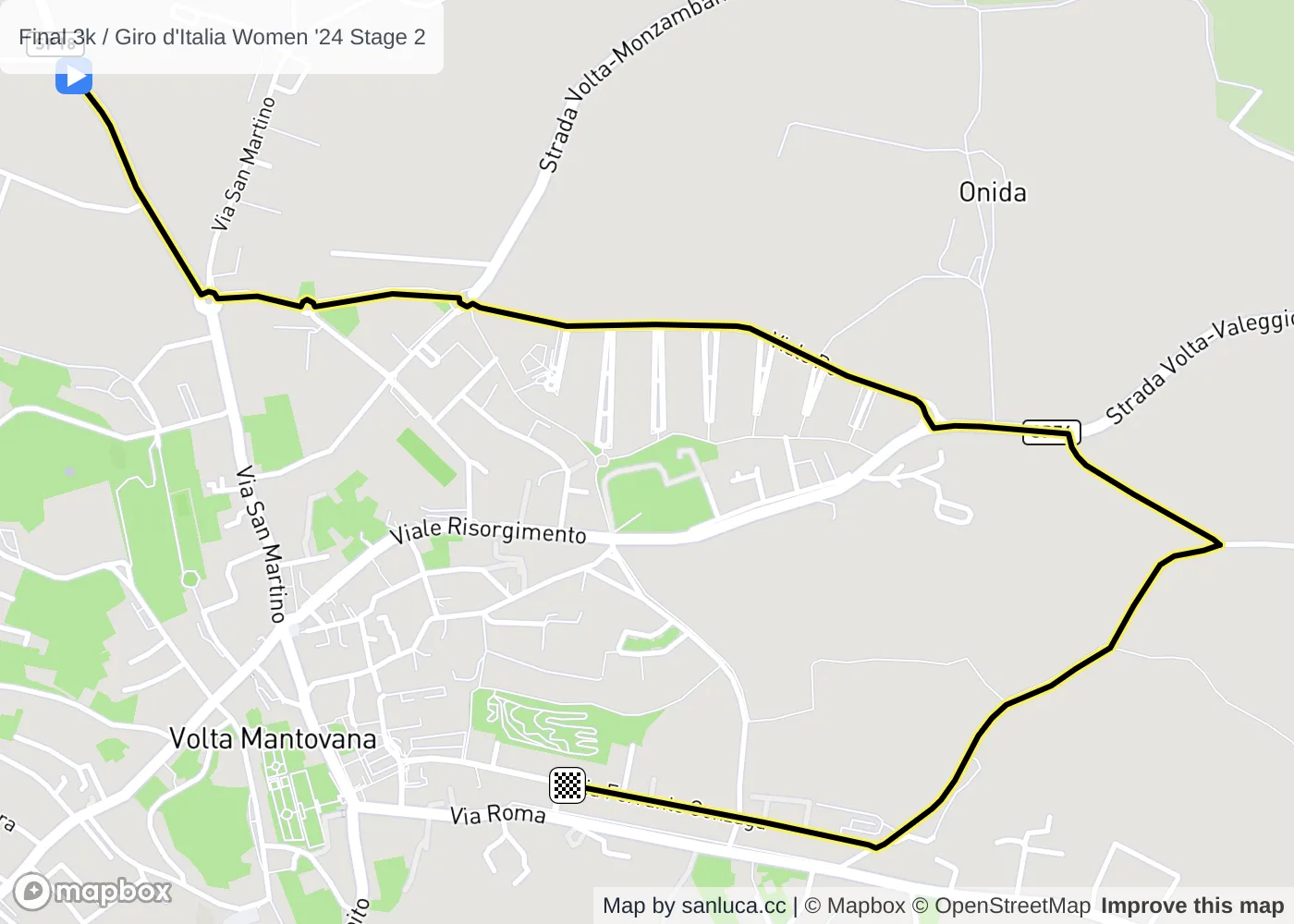
Stage 3
Stage 3 will be a classic hockey stick stage, starting with 100 kms of flat and then finishing with a cat. 2 climb up to Toano (12.5 km 5%).

The climb in itself is not very hard and should not create huge gaps, but the winner on here will get the Maglia Azzurra due to the 15 points up for grabs.
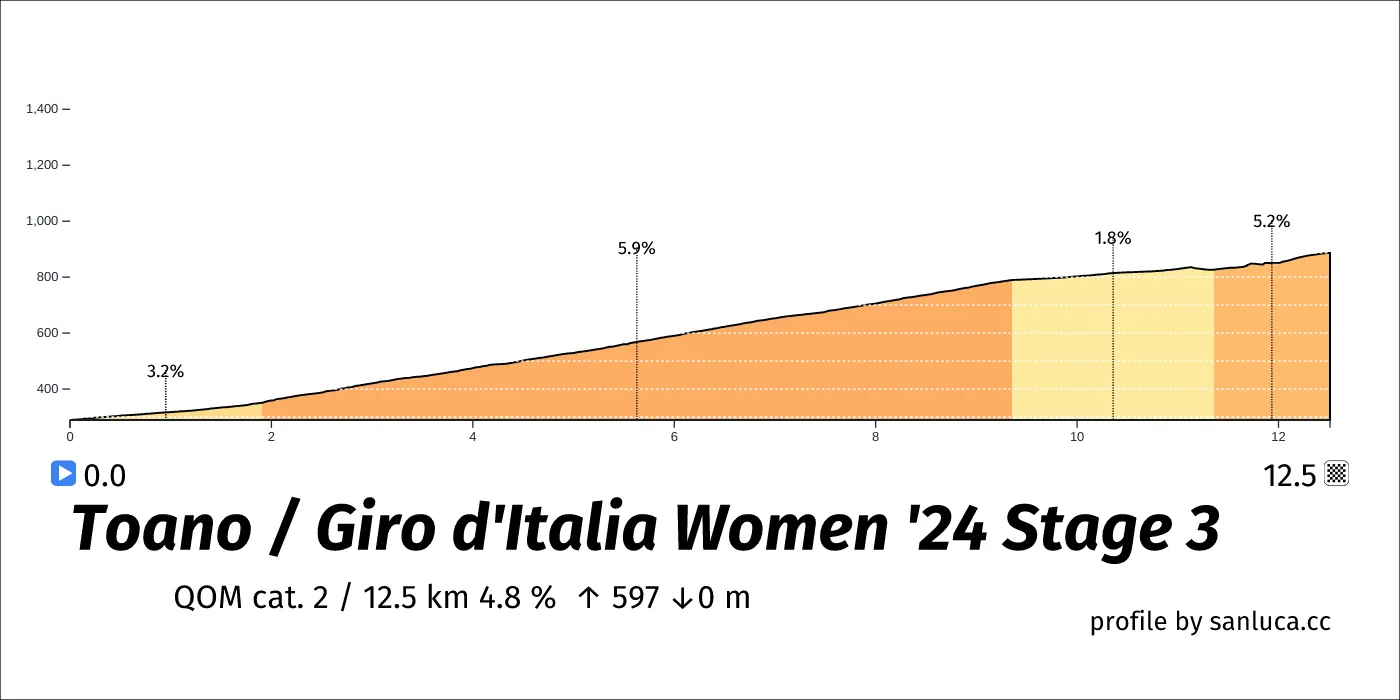
Being a stage that gives the first rider over the line 50 points in the points classification, this classification could play out to be something the riders with more endurance could also target.
Stage 4
Stage 4 will be a hilly stage starting again with a flat (and straight) section for the first 80 kilometers after which there will be some climbing with one cat. 2 and two cat. 3 climbs. It is one of the longer stages of this Giro with 134 km and could potentially see some GC action.
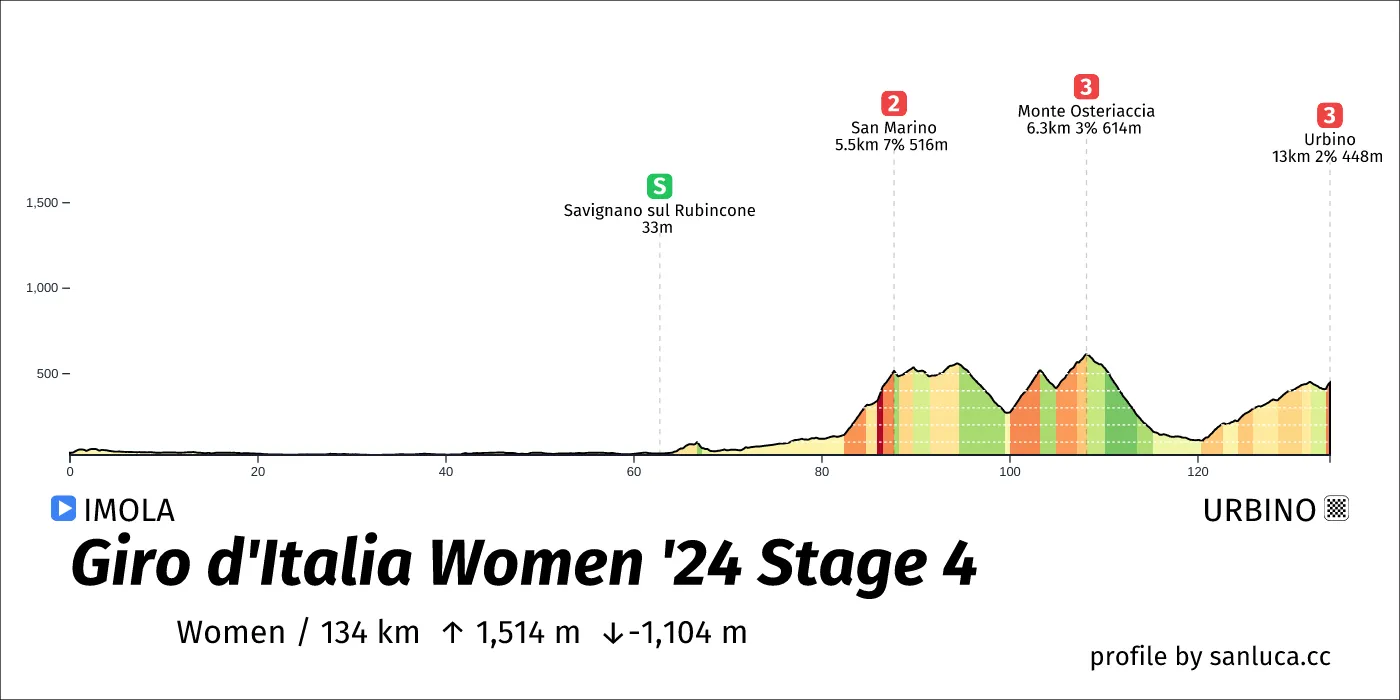
The first two climbs have their hard moments with the San Marino climb having a gradient of around 14.5% for 500 meters, but otherwise they should be fairly easy to overcome for most of the riders. The final climb up to Urbino is 13 km long and only has a gradient of 2.5%, but with the final 500 meters rising with 8.2% after 1.5 km slightly downhill, we will see a hard sprint for the win.
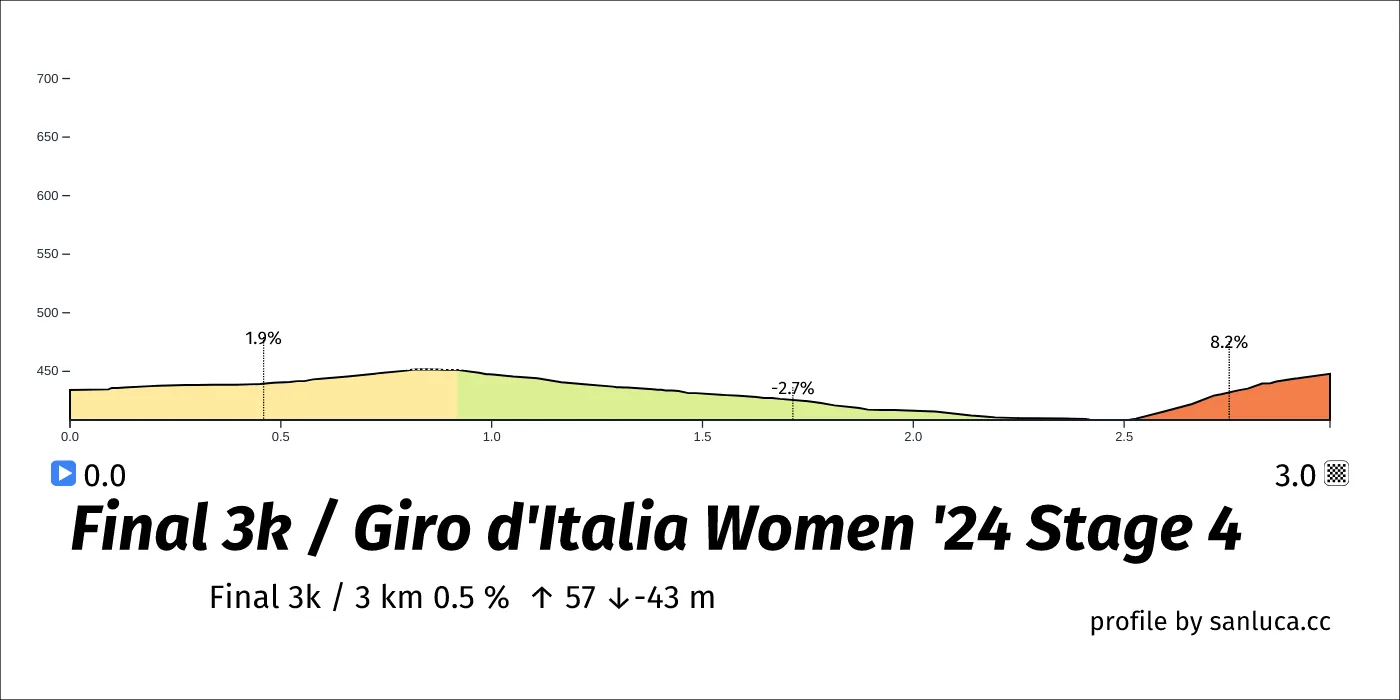
As with stage 3, this stage gives 50 points to the points classification for the first rider over the line, again this could mean some riders who might not be that good in bunch sprints but still have the endurance over the hills could try to target the Maglia Rossa.
Stage 5
Stage 5 is another stage that should end in a bunch sprint. It is 108.1 km long and has just under 1000 meters vertical gain spread almost evenly across the whole stage. There is only one categorized climb with an average gradient of only 4%.
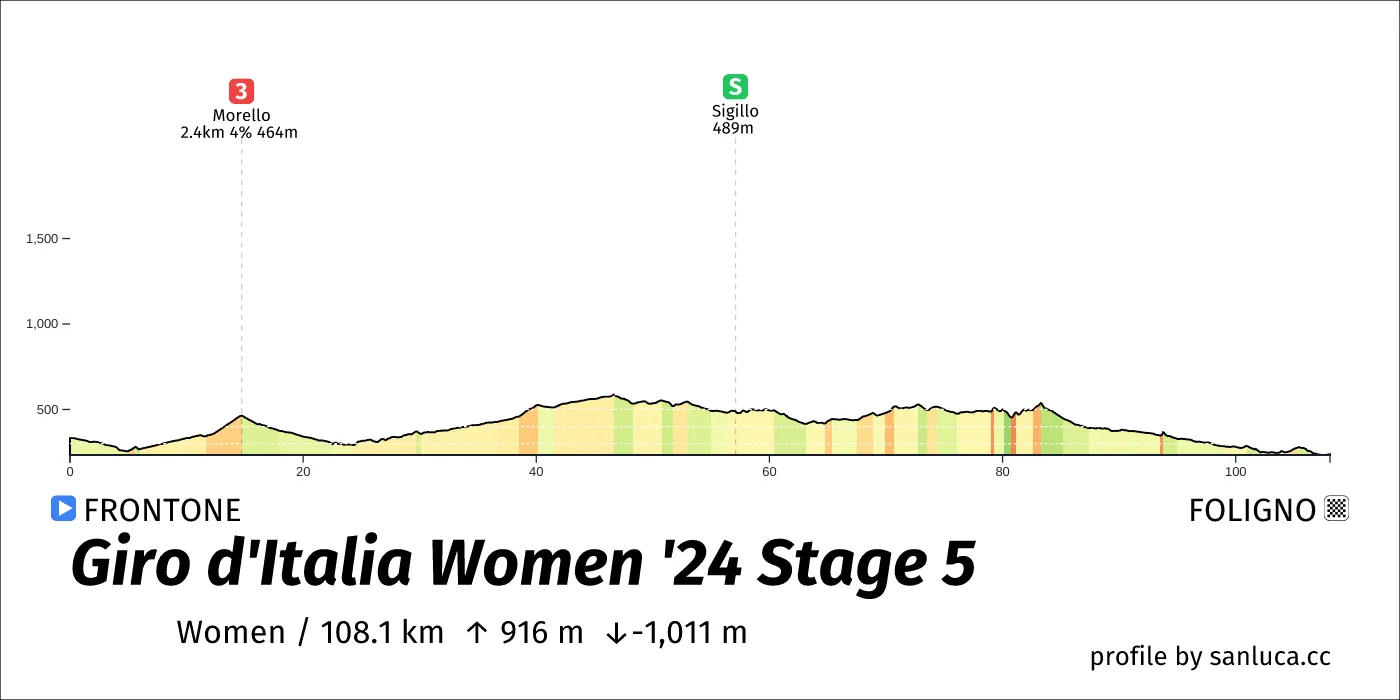
In the sprint, the last turn comes with 200 meters to go. The final 3 kilometers are a bit downhill which means that the run-in will be very fast. This also means that position is crucial in this sprint, and that already having the front of the peloton going into Foligno could be a very good idea. The sprint should be started almost right after the turn which is another reason to be positioned well there.
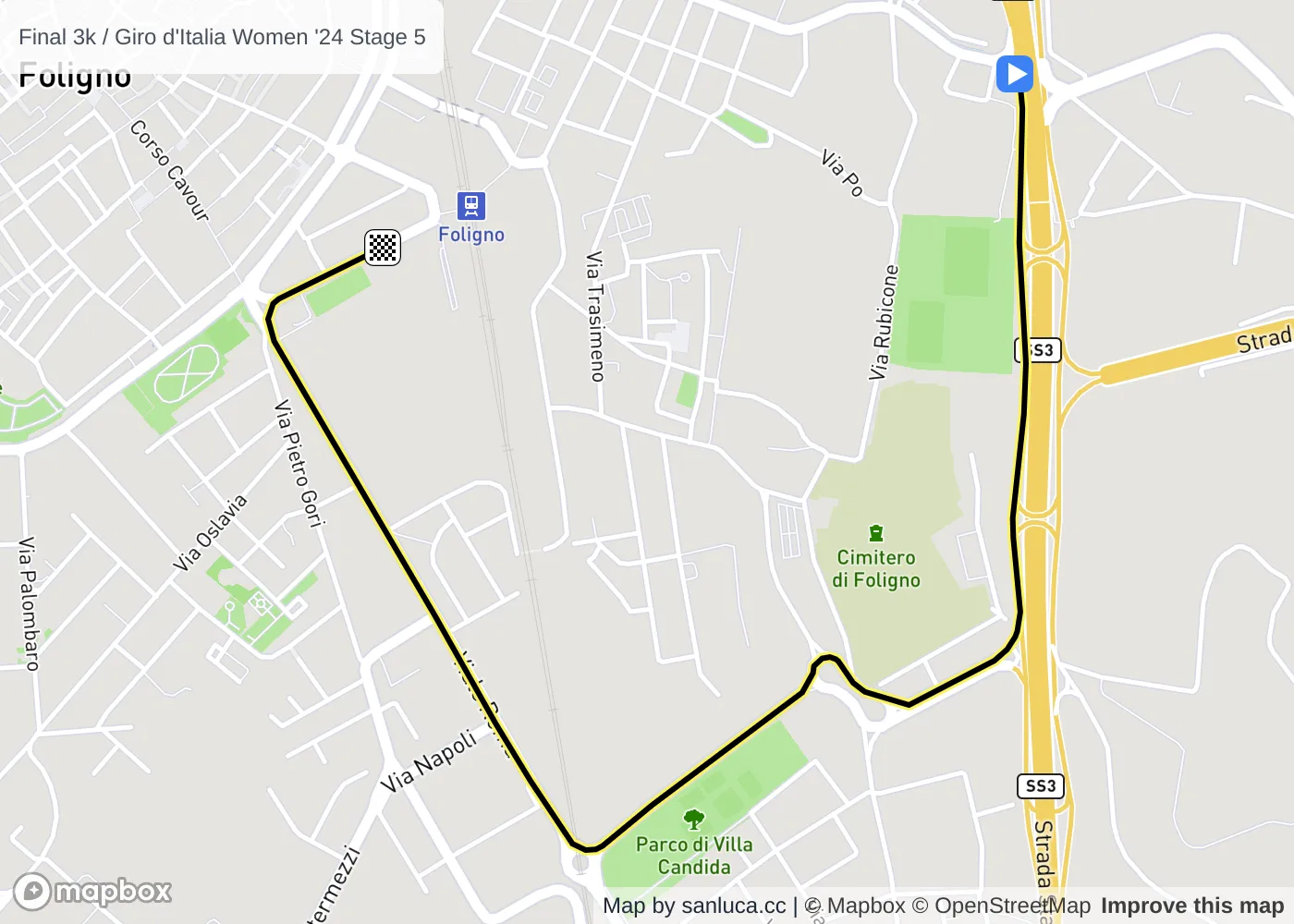
Stage 6
Leaving the easier stages, we get to stage 6, the longest stage of the race. 154.2 km and a vertical gain of around 2500 meters. This stage looks like a golden opportunity for riders wanting to go in the break with a hard climb placed early on (although not a categorized one). If a break gets going, there is a good chance to go all the way with the stage going up and down almost the whole day.
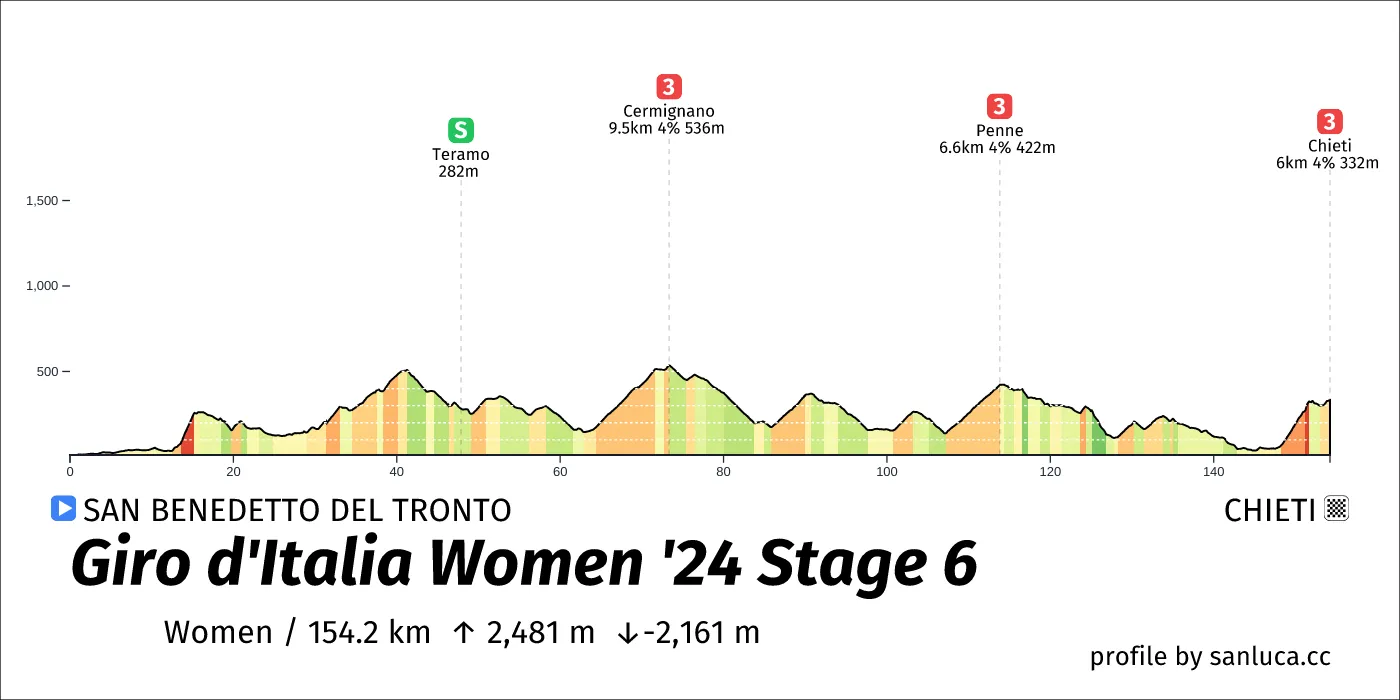
The finish climb up to Chieti is a place where a cleverly placed attack could mean gaining some time on your opponents, the only issue is that there are 2.5 km home from the "top" of the climb which has a steep section for about half a kilometer.
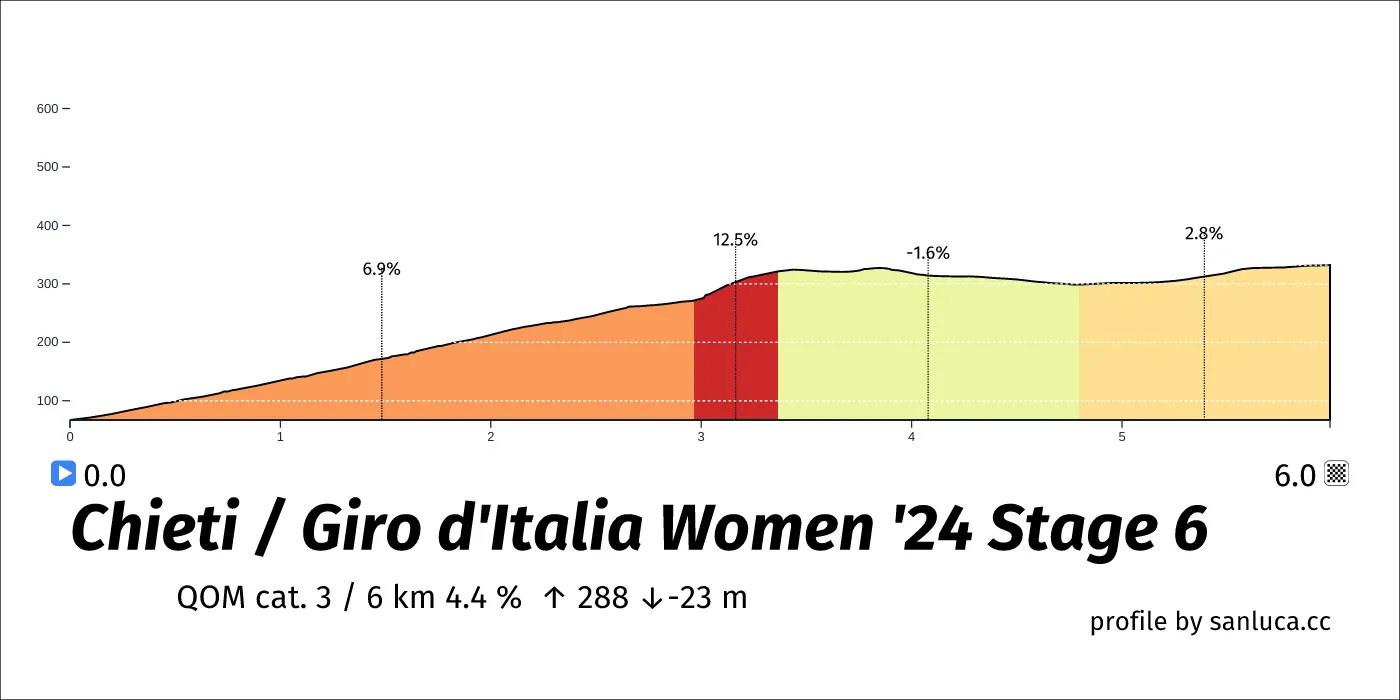
With only 3 cat. 3 climbs, this stage should not decide the QOM competition, and with the final there are not going to be huge gaps in the GC, hopefully it will be an exciting breakaway stage with a beautiful fight up the last climb.
Stage 7
The queen stage of this year's Giro d'Italia women. Around 1/4 of all the vertical gain and a maximum of 50 QOM points to be scored. This stage either goes up or down the whole day with an uphill start that could see a strong breakaway going. They will not have a chance on this stage though with the big GC fight being on first the Passo Lanciano and then the Blockhaus.

With the amount of QOM points on todays stage, it will be extremely important for riders competing for the Maglia Azzurra to be awake here and at least try to get points on the Passo Lanciano. It might very well be a GC rider that ends up with the jersey in the end though, especially due to this stage.
Stage 8
Stage 8 looks like a stage that can do it all. There are not extremely high gradients but at the same time there is a lot of climbing condensed into 117.4 km. The climbs might be long but without major gradients, and with a long descent afterwards and the climbs being early on, there should not be a difference when getting to the last 10 k. This stage might be a breakaway stage, but could also end up with the bunch coming to the last 2 climbs together.

The concepts for the final has been borrowed from stage 1 of the men's Giro d'Italia with a small climb (1.6 km 7%) going off the main road, compared to stage 1 of the men's Giro, this stage also ends with a 1.2 km drag at 6.6% to the finish line. This final should be exciting, and there might be some teams trying to do some last minute GC changes.
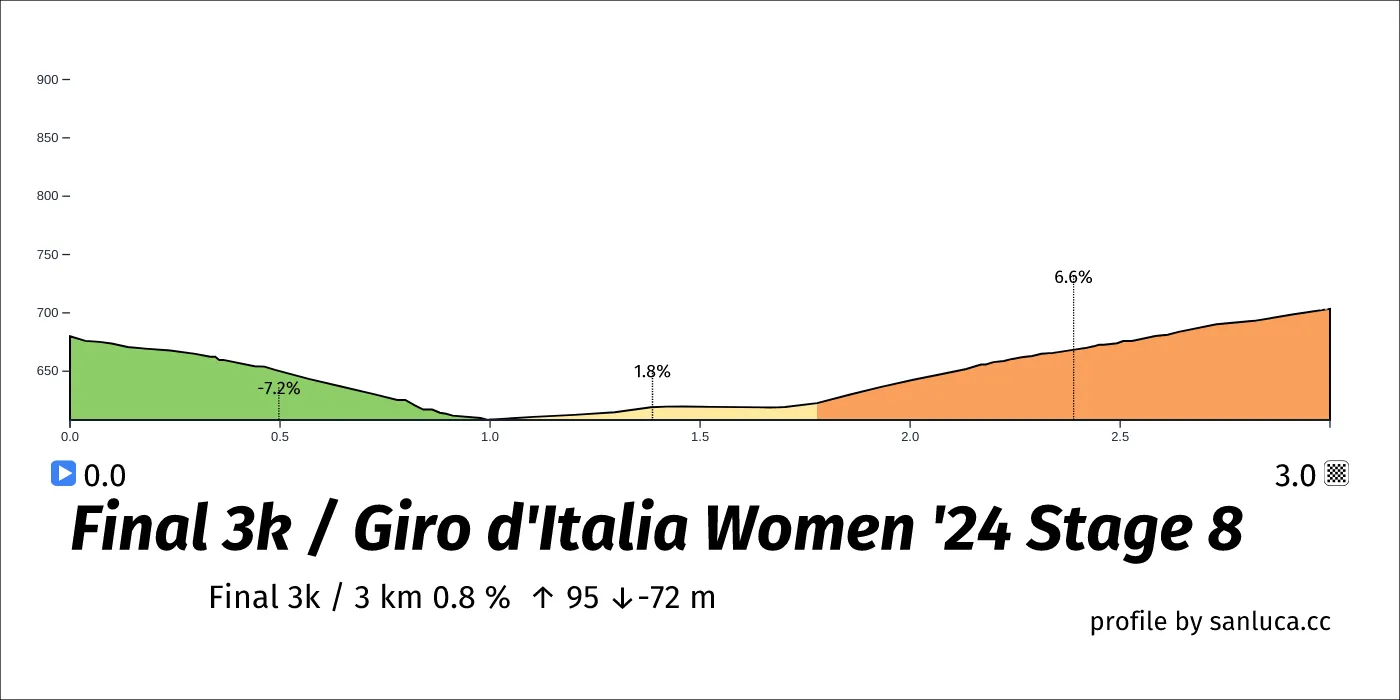
With the cat. 1 climb Castel del Monte, there is also a good number of QOM points to be scored on this stage and could very well decide that classification.
Conclusion
With a wide variety of stages, this year's Giro d'Italia women should be an exciting one. The GC will mostly be decided on stage 7 with the Blockhaus, but there will also be battles before that. The points classification might not go to a sprinter this year due to the way points are given out on the first 4 RR stages, but also the amount of points given out on the last 3. The QOM competition will hopefully be exciting to follow along the first couple of stages, and one rider could potentially score a maximum of 78 points before the Blockhaus stage with a maximum of 50 points on the line. It might be a GC rider that gets the jersey in the end, but with the cat. 1 climb on the last stage, it could also be someone else.